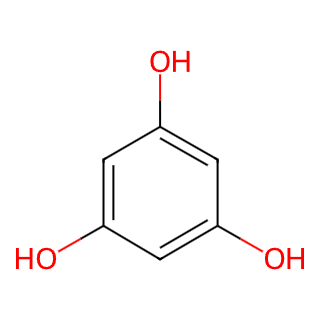- Synthetic anti-infective drugs
- Medications for the digestive system
- Antipyretic and analgesic drugs
- Medications for the blood system
- Medications for the respiratory system
- Anti-allergic drugs
- Medications for the urinary system
- Diagnostic medications
- Immunosuppressive and immunomodulatory drugs
- Vitamins and mineral supplements
- Antioxidants and medications for osteoporosis
- Antiparasitic drugs
- Ophthalmic medications
- Amino acids and their derivatives
- Dermatological medications
- Medications for the circulatory system
- Antitumor drugs
- Medications for the nervous system
- Hormonal and endocrine function-regulating drugs
- Antibiotics
- Others
CAS NO.: 108-73-6




Phloroglucinol, also known as phloroglucinol or 1,3,5-trihydroxybenzene, is an organic compound with various properties and applications. Here's a detailed introduction to it in English:
Basic Information
Chemical Name: Phloroglucinol
Alternative Names: 1,3,5-Trihydroxybenzene
Molecular Formula: C6H6O3
Molecular Weight: 126.11 g/mol
CAS Number: 108-73-6
EINECS Number: 203-611-2
Physical Properties
Appearance: White to pale yellow crystalline powder
Melting Point: 215-220°C
Boiling Point: 331.1°C
Solubility in Water: Slightly soluble
Density: 1.488 g/cm³
Flash Point: 174.9°C
Chemical Properties
Phloroglucinol undergoes keto-enol tautomerism, which accounts for its diverse chemical reactivity. For instance, it reacts with ammonia to form phloroglucidamine, which hydrolyzes back to phloroglucinol in acidic aqueous solutions. Additionally, phloroglucinol reacts with formaldehyde under alkaline conditions to produce an orange-red compound, a reaction utilized for detecting trace amounts of formaldehyde in textiles and clothing.
Uses
Pharmaceutical Industry: As a medication, phloroglucinol acts directly on smooth muscles of the gastrointestinal and genitourinary tracts, serving as a hydrophilic, non-anticholinergic, and non-papaverine-like smooth muscle relaxant. It's primarily used to treat spasmodic pain conditions such as gastrointestinal spasms, renal colic, and biliary colic. Compared to other smooth muscle relaxants, phloroglucinol does not exhibit anticholinergic effects, allowing it to relieve smooth muscle spasms without causing a range of anticholinergic side effects or affecting cardiovascular function.
Chemical Analysis: Phloroglucinol is used in analytical chemistry for detecting various metal ions and compounds, including antimony, arsenic, cerium, chromate, chromium, gold, iron, mercury, nitrite, etc. It's also utilized for determining the presence of furfural, pentoses, polysaccharides, methanol, chloral hydrate, turpentine oil, lignified cell tissues, and hydrochloric acid in gastric juice.
Scientific Research: Due to its diverse biological activities such as antioxidant, anti-inflammatory, and antitumor effects, phloroglucinol finds applications in scientific research, including studies on the antioxidant mechanisms, anti-inflammatory actions, and antitumor efficacy of drugs.
Safety and Precautions
Health Hazards: Acute poisoning can cause vomiting, hypothermia, weakness, ataxia, cyanosis, coma, suffocation, and even death. Long-term exposure may lead to anemia and jaundice. It's also a skin sensitizer, causing dermatitis.
Fire and Explosion Hazard: Phloroglucinol is combustible, toxic, and sensitizing.
First Aid Measures: For skin contact, remove contaminated clothing and rinse thoroughly with plenty of running water for at least 15 minutes. For eye contact, immediately flush with copious amounts of water or saline for at least 15 minutes. If inhaled, remove to fresh air, maintain an open airway, administer oxygen if breathing is difficult, and seek medical attention. If swallowed, rinse mouth with water, do not induce vomiting, and seek medical attention.
Handling Precautions: Operate in a closed system with adequate local exhaust ventilation. Where feasible, isolate the operation. Operators must be trained, adhere to operating procedures, and wear appropriate protective equipment such as dust respirators, safety glasses, protective clothing, and rubber gloves. Keep away from heat, sparks, and ignition sources. Smoking is strictly prohibited in work areas. Use explosion-proof ventilation systems and equipment. Avoid dust generation and contact with oxidants and acids.

Tai Yau Street, San Po Kong, Kowloon, Hong Kong, China.



